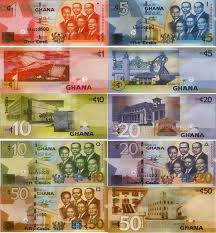The Evolution of the Cedi Note Since Independence
Since gaining independence in 1957, Ghana has seen significant changes in its currency, the cedi. Originally introduced to replace the British West African pound, the cedi has undergone several transformations, reflecting the country's economic challenges and aspirations.
The Birth of the Cedi
When Ghana became independent, it adopted the cedi as its currency, which was pegged to the British pound. This initial cedi was subdivided into 100 ghanas, with banknotes issued in denominations of 1, 5, 10, 20, and 50 cedis. The design featured national symbols and notable figures, emphasizing Ghana's rich cultural heritage. The cedi was seen as a symbol of the newfound freedom and national identity.
Economic Challenges and Redenomination
The early years post-independence were marked by economic instability. High inflation rates and fluctuating economic policies led to a decline in the value of the cedi. By the mid-1980s, it became clear that a redenomination was necessary. In July 1982, the government introduced a new cedi, replacing 1,000 old cedis with 1 new cedi. This move aimed to simplify transactions and restore confidence in the currency.
The Role of the Bank of Ghana
The Bank of Ghana has played a crucial role in managing the cedi throughout its history. As the central bank, it is responsible for issuing currency, managing inflation, and stabilizing the economy. Over the years, the bank has introduced various security features in cedi notes to combat counterfeiting, including watermarks, security threads, and color-changing ink.
The Introduction of the Ghana Cedi (2007)
In 2007, Ghana experienced another redenomination, leading to the introduction of the Ghana cedi (GHS). This new cedi replaced the old cedi at a rate of 1 GHS to 10,000 old cedis. The redesign aimed to modernize the currency and improve public confidence. The new notes, issued in denominations of 1, 5, 10, 20, 50, and 100 cedis, featured prominent Ghanaians and significant national landmarks, further embedding Ghanaian identity into the currency.
The Impact of Digital Currency
In recent years, the rise of digital payment systems has influenced how Ghanaians interact with the cedi. Mobile money platforms have become ubiquitous, allowing for seamless transactions without the need for physical cash. This shift has prompted the Bank of Ghana to explore digital currency initiatives, including the introduction of a central bank digital currency (CBDC) known as the e-cedi. This innovation aims to enhance financial inclusion and streamline monetary policy.
Current State of the Cedi
As of 2024, the cedi continues to face challenges, particularly with inflation and exchange rate volatility. Despite these hurdles, the Bank of Ghana remains committed to stabilizing the currency through prudent monetary policies. The design of the cedi notes has also evolved, incorporating advanced security features to ensure public trust.
The Future of the Cedi
Looking ahead, the future of the cedi will likely be shaped by ongoing economic reforms and technological advancements. The Bank of Ghana's initiatives to promote cashless transactions and digital currency could redefine how Ghanaians perceive and use their currency. Furthermore, as Ghana continues to integrate into the global economy, the cedi's performance on international markets will be crucial for national stability.
Conclusion
The journey of the cedi since Ghana's independence is a reflection of the country's broader economic narrative. From its initial introduction to the challenges of inflation and the rise of digital currencies, the cedi remains a vital symbol of Ghana's sovereignty and resilience. As the nation navigates the complexities of the modern economy, the cedi will undoubtedly evolve, mirroring the aspirations and realities of the Ghanaian people.


